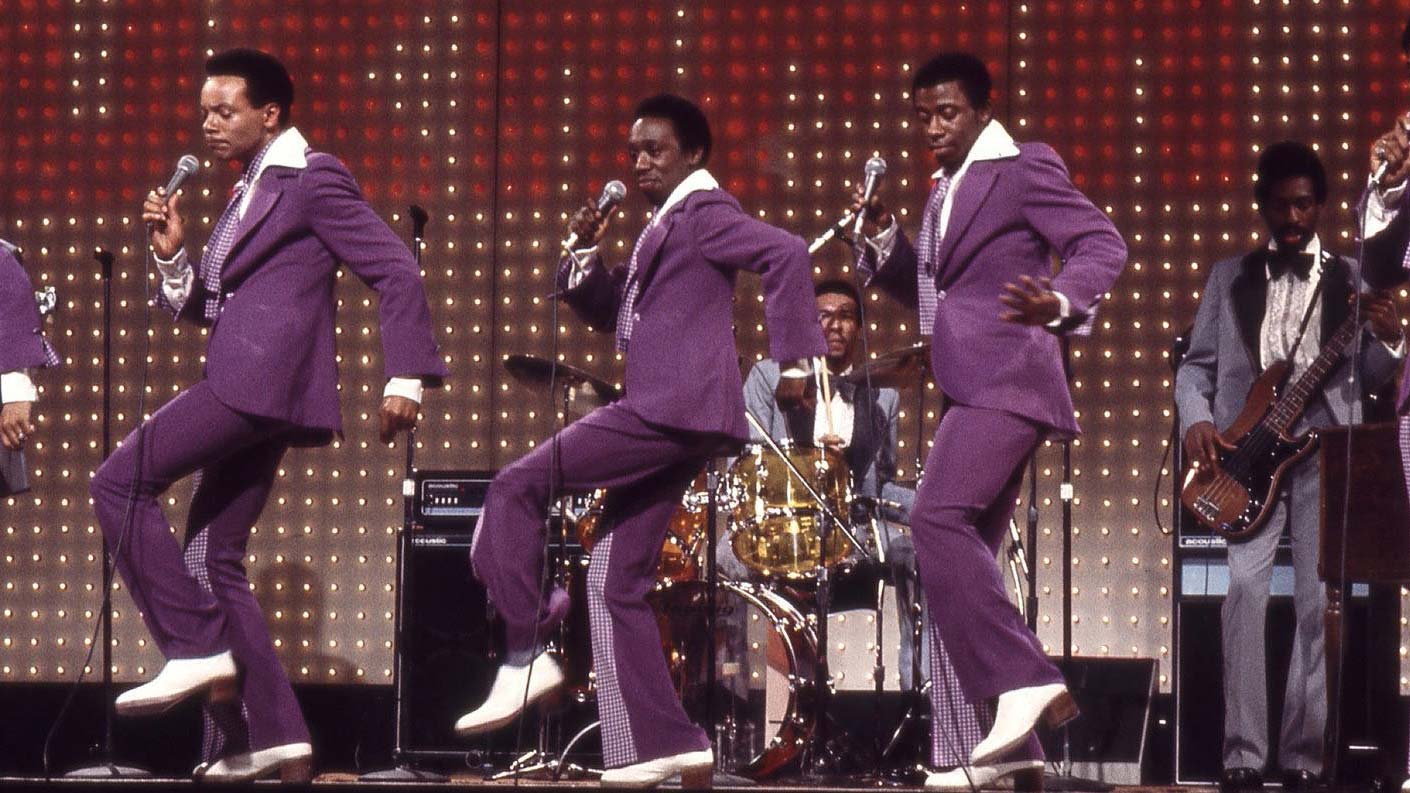
The Dramatics
Initially formed in 1962, the Dramatics first signed with Volt—then a part of Stax Records in Memphis—in 1969, but were dropped after one unsuccessful single. They found their fortune after re-signing in 1971, quickly becoming one of soul music’s supergroups with a string of hits that included “Whatcha See Is Whatcha Get,” “Get Up and Get Down,” “In the Rain,” “Hey You! Get Off My Mountain,” and “Fell for You.” The group moved over to Cadet Records in 1974 and the next year to ABC, where they charted such hits as “Me and Mrs. Jones,” “Be My Girl,” “I Can’t Get Over You,” “Shake It Well,” and (after ABC was absorbed by MCA in 1979) “Welcome Back Home.”
Following a short stay at Capitol Records, the Dramatics disbanded in 1982. Leader Ron Banks pursued a solo career, as did L.J. Reynolds, who’d left in 1980. In 1985, however, Banks and Reynolds reunited with other group members to recordSomewhere in Time (A Dramatic Reunion) with producer F.L. Pittman for Fantasy Records in Berkeley, California. The reunion was intended to be only temporary, but the album and tours surrounding it were greeted with such enthusiasm that the singers decided to stick together. In 1989, they found themselves back on Volt—by then a division of Fantasy—with the Pittman-produced album Positive State of Mind. They followed up withStone Cold (1991), A Dramatic Christmas (1999), and If You Come Back to Me (2000); L.J. Reynolds also recorded a solo album, Love Is About to Start (1999).
The Dramatics’ distinctive harmonies are characterized by a top-to-bottom blend surpassed by few other groups in the business. Anchored by Willie Ford, one of the strongest bass singers on the planet, the quintet features the alternating leads of high tenor Banks and low tenor/baritone Reynolds. Lenny Mayes and Winzell Kelly complete the lineup.
Banks, the only original member of the group remaining, was attending Detroit’s Cleveland Junior High School when he joined with five students from Pershing High School in 1962 to form the group that soon became known as the Dramatics. Banks’s friend Ford joined in 1969, after having sung briefly with the Capitols. Reynolds joined in 1972; the Saginaw-born singer had recorded earlier as a solo artist and with the group Chocolate Syrup. Mayes came on board with Reynolds. Kelly, the newest member, has been with the Dramatics now for a decade.
The Dramatics’ style was initially influenced by such groups as the Temptations, Four Tops, Miracles, and Little Anthony and the Imperials. The Contours (of “Do You Love Me?” renown) provided the model for the Dramatics’ lively, often spontaneous choreography.
None of the Dramatics’ early singles—for Wingate in 1964, Sport in ‘67, and Volt in ‘69—were substantial hits. Their luck changed in 1971 when producer Tony Hester spotted them at a Detroit nightclub and offered them his tune “Whatcha See Is Whatcha Get.” The song and Hester’s production style, which showcased the group’s multi-lead vocals, were so catchy that Volt Records did not hesitate in re-signing the Dramatics. An eight-month cross-country tour with James Brown—during which he told them, “I love you guys ‘cause you sweat a lot”—followed, helping to solidify a fervent following for the group.
The Dramatics’ loyal fan base came to include a new generation of music lovers in the Nineties. In 1993, the quintet contributed its harmonies to “Doggy Dogg World,” a track from rapper Snoop Doggy Dogg’s multi-platinum debut album. “Dr. Dre was getting ready to sample us,” Banks recalls, “and Snoop said, ‘No. This is my first album. Them cats still around, man.’ I didn’t even know what a Snoop Doggy Dogg was.”
The group has since collaborated with Coolio, 40 Thieves, and Ice Cube. And Banks produced a remake of “In the Rain,” the Dramatics’ biggest hit, featuring R&B heartthrob Keith Sweat and rapper Ghostface of the Wu-Tan Clan. Today, the Dramatics spend seven months a year touring. “We’re working exceptionally well, but we’re not killing ourselves,” Banks says. “They’re paying us more than they’ve ever paid us in our lives.”

